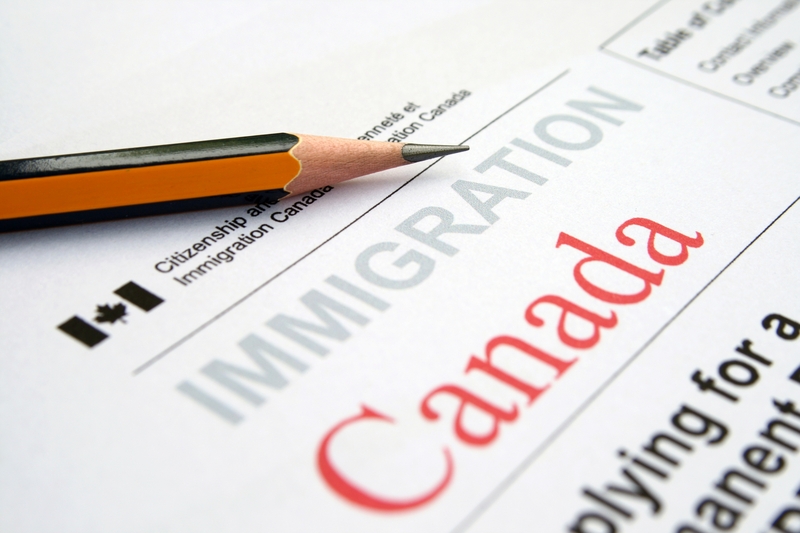To download the full results, fill out the form at the bottom of the page.
Energy prices are a burning issue in Ontario. Innovative Research Group Inc. (INNOVATIVE) asked a series of energy-related questions for the Ontario Energy Association on our monthly mixed land line and cell live caller telephone survey of 600 respondents. The survey was conducted immediately following the Ontario Throne Speech and has a margin of error is +/- 4.0 %, 19 times out of 20. Energy prices were cited by 19% of Ontario voters as their top concern, making them the second most cited issue. By way of comparison, the economy was the top choice among 26% of voters, and healthcare was the top choice among 16% of voters.
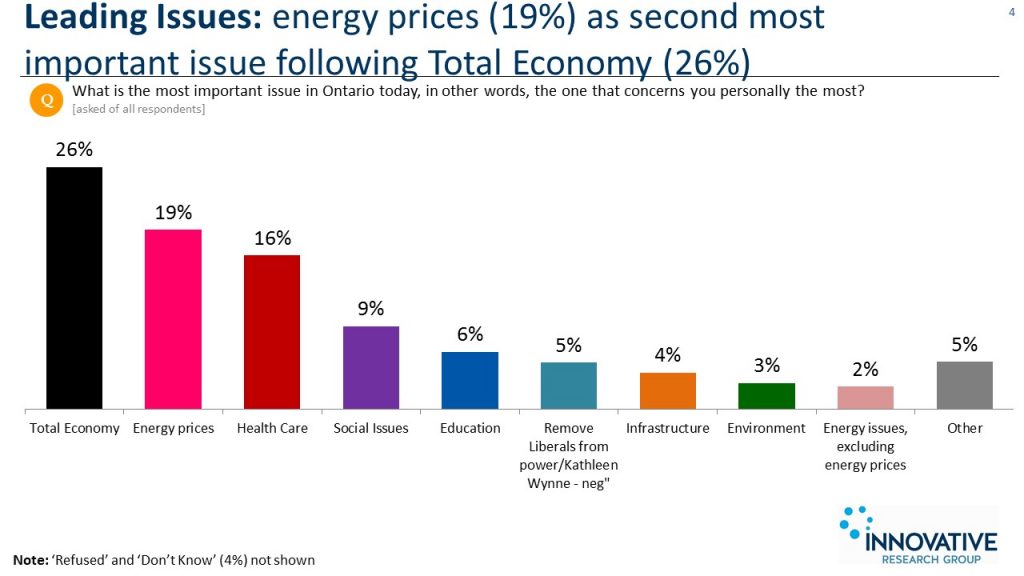
This important place in the consciousness of voters remains even when prompted with other important topics, with electricity prices being ranked as more important than education, climate change and roads and transit.
In over 14 years of tracking, we have never seen Ontarians so angry over the price of energy, with 70% disagreeing that “customers are well-protected with respect to prices and the reliability and quality of electricity service in Ontario”. When we dig down further, 42% of voters believe the government’s plan for energy is a bad one, while an additional 30% believe the government doesn’t really have a plan – sharp increases from just two years ago.
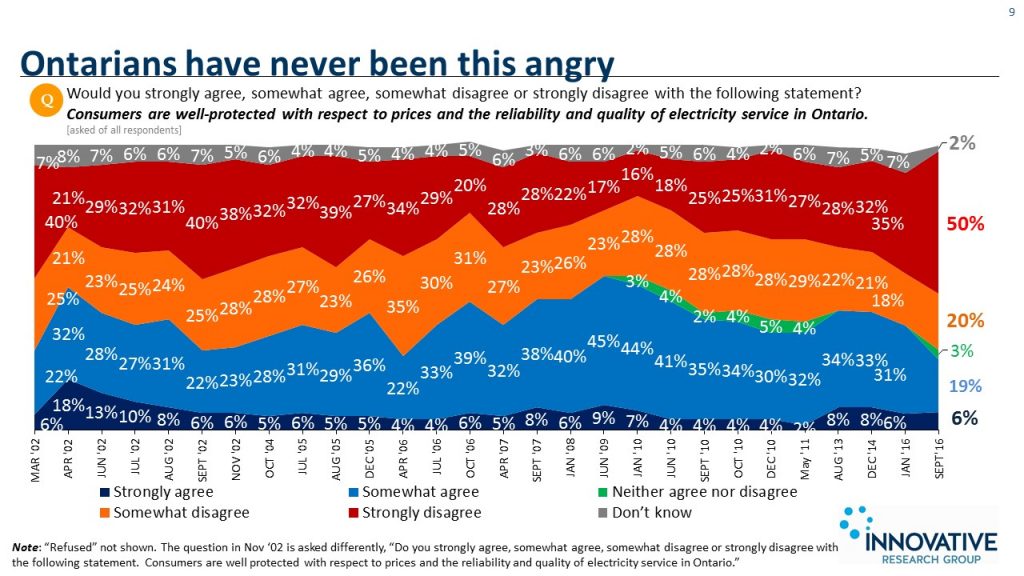
ON THE ISSUES
Paying for improvements: When probed on their priorities for the electricity system, Ontarians want to see more efforts made to improve the electricity system across a number of areas including maintenance, security, environmental impact and new generation. However, despite this perception of the need for improvements, they are not willing to pay more. Even relatively modest increases in energy prices of 2.5% a year for the next 10 years find 73% opposition. Opposition grows as the price increases.
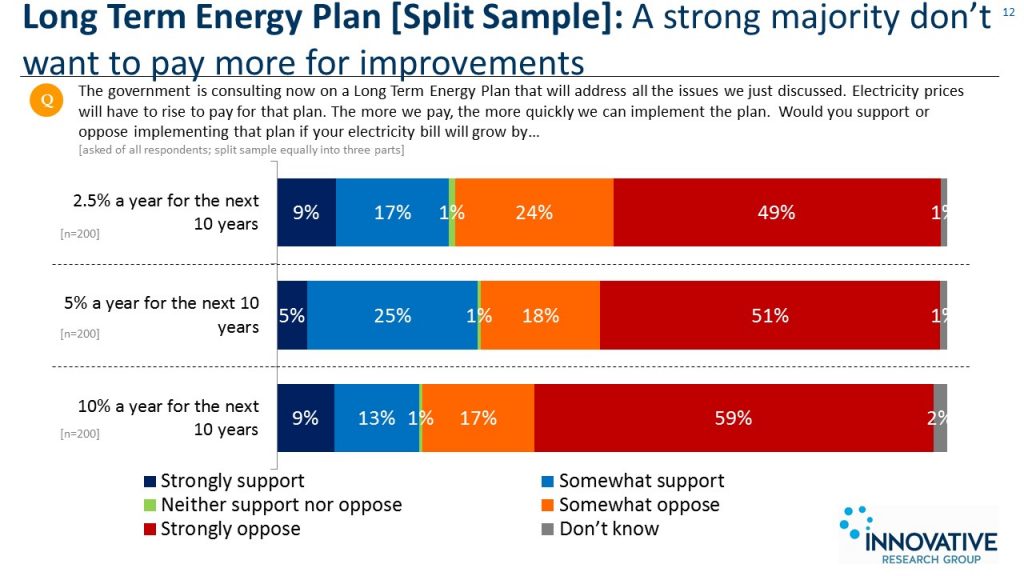
Ontarians are not being hypocritical; they have a clear reason for resisting price increases. A majority of voters (56%) believe there are enough savings available to pay for all the improvements we want without raising rates. This is up from 39% in 2014.
Cyber security: Energy sector experts acknowledge that cyber security threats are an ongoing and major concern, with thousands of attacks taking place every year. Despite this, only one-in-four Ontarians (26%) believe these attacks are already taking place, while the majority oppose an additional cost.
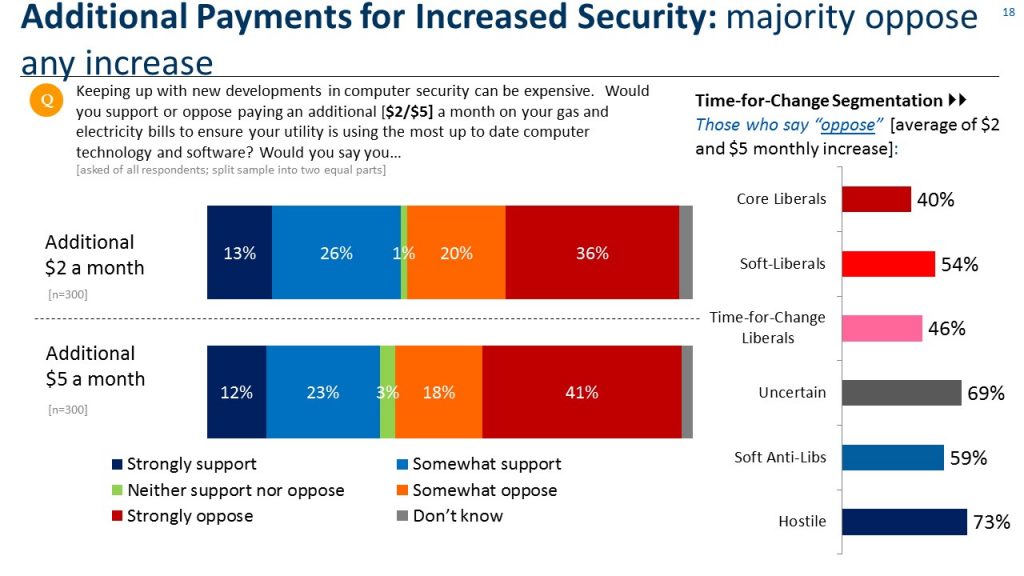
Cap-and-Trade: When asked about the Ontario Government’s proposed Cap-and-Trade plan, the majority of people (57%) are unsure whether to support it or not, with 22% saying it’s a good thing, and 22% a bad thing. However, when presented with potential increases of 5%, 10% or 15% a year, a substantial majority oppose paying a price for carbon with opposition growing as prices increases.
On top of the price concern, we find 63% of respondents believe that the province should leave action on climate change to the federal government, rather than have Ontario play a leadership role with higher prices (37%). This number is especially high among Liberals who believe it is time for a change and among voters who oppose the Liberals.
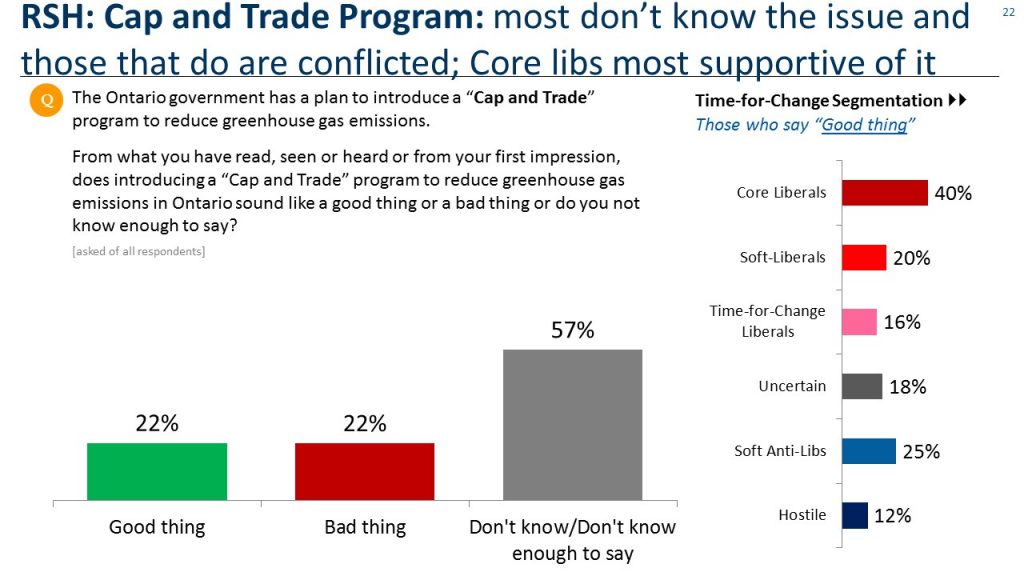
The Politics of Energy: Despite the top of mind concern about prices, not all Ontarians see prices as the top priority for energy policy. While 40% say keeping prices down should be the top government priority, 21% say it should be using energy to create jobs, 19% say it should be reducing impacts on the environment and 17% say ensuring a reliable system for the future.
When we ask which party is best to deal with each of those items, we see the Liberals lead among those who car about reliability, protecting the environment and using energy to create jobs while the PCs are seen as best among those whose top concern is reducing prices.
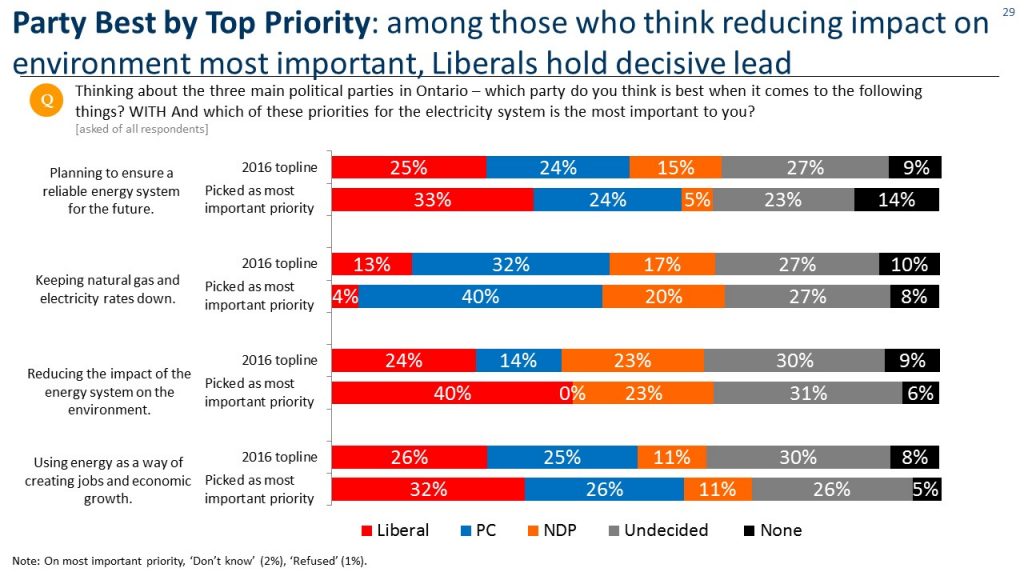
Throne Speech initiatives: In early September, the government announced a series of new initiatives for electricity including programs to cut costs for consumers and incentivising industry to shift usage, all of which enjoy substantial support from the public. Overall, all three of these policies enjoy considerable support, especially among Core Liberals (89%) and the electorally important Time-for-Change Liberals (59%).
Most importantly, while those measures leave non-Liberals unimpressed, both core and swing Liberal voters are more likely to vote for the Liberals as a result of these measures.
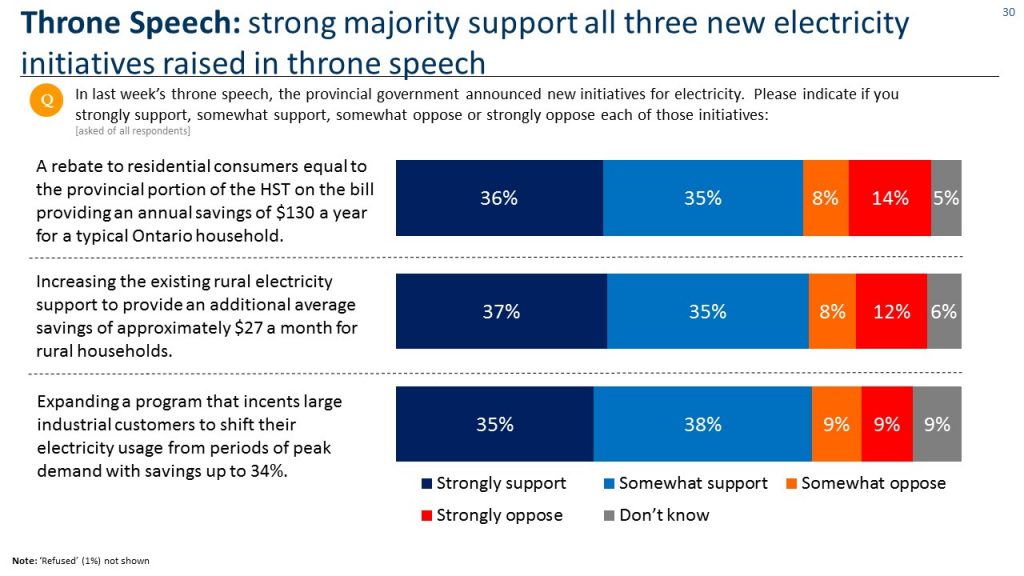
To view the additional results, including additional perceptions around cyber threats, segmentation of support for cap-and-trade, and relative priorities for the electricity system, please fill out the form below to access to the full presentation.

